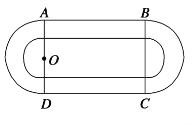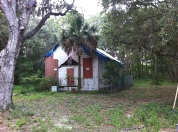ΧβΡΩΡΎ»ί
ΓΨΧβΡΩΓΩΕΧΈΡΗΡ¥μ
ΦΌΕ®”Δ”οΩΈ…œάœ Π“Σ«σΆ§Ήά÷°ΦδΫΜΜΜ–όΗΡΉςΈΡΘ§«κΡψ–όΗΡΡψΆ§Ήά–¥ΒΡ“‘œ¬ΉςΈΡΓΘΈΡ÷–Ι≤”–10¥Π”ο―‘¥μΈσΘ§ΟΩΨδ÷–ΉνΕύ”–ΝΫ¥ΠΓΘΟΩ¥Π¥μΈσΫω…φΦΑ“ΜΗωΒΞ¥ ΒΡ‘ωΦ”ΓΔ…Ψ≥ΐΜρ–όΗΡΓΘ
‘ωΦ”ΘΚ‘Ύ»±¥ ¥ΠΦ”“ΜΗω¬©Ή÷ΖϊΚ≈(/\)Θ§≤Δ‘ΎΤδœ¬Οφ–¥≥ωΗΟΦ”ΒΡ¥ ΘΜ
…Ψ≥ΐΘΚΑ―Εύ”ύΒΡ¥ ”Ο–±œΏ(\)Μ°ΒτΘΜ
–όΗΡΘΚ‘Ύ¥μ¥ œ¬Μ≠“ΜΚαœΏΘ§≤Δ‘ΎΗΟ¥ œ¬Οφ–¥≥ω–όΗΡΚσΒΡ¥ ΓΘ
ΉΔ“βΘΚ1. ΟΩ¥Π¥μΈσΦΑΤδ–όΗΡΨυΫωœό“Μ¥ ΘΜ
2. ÷Μ‘ –μ–όΗΡ10¥ΠΘ§Εύ’Ώ(¥”ΒΎ11¥ΠΤπ)≤ΜΦΤΖ÷ΓΘ
Mary wanted to be a nurse when he left school. Meanwhile, she joined the Red Cross and had some limited training. She taught that in case of an accident she should give the person first aid at once or then send for a doctor. One day, there were an accident in a busy street. When Mary arrived in, she saw a man bending over a woman who had been knocked down by a car and lied motionless in the street. Mary ran up, pushed the man away, informed the crowd what she was a Red Cross nurse and began to help a wounded woman. After a few minutes, the man said, "While you reach the part about send for a doctor, donΓ·t worry. IΓ·m here already.
ΓΨ¥πΑΗΓΩ
Mary wanted to be a nurse when ![]() left school.
left school. ![]() , she joined the Red Cross and had some limited training. She
, she joined the Red Cross and had some limited training. She ![]() taught that in case of an accident she should give the person first aid at once
taught that in case of an accident she should give the person first aid at once ![]() then send for a doctor. One day, there
then send for a doctor. One day, there ![]() an accident in a busy street. When Mary arrived
an accident in a busy street. When Mary arrived ![]() , she saw a man bending over a woman who had been knocked down by a car and lied
, she saw a man bending over a woman who had been knocked down by a car and lied ![]() in the street. Mary ran up, pushed the man away, informed the crowd
in the street. Mary ran up, pushed the man away, informed the crowd ![]() she was a Red Cross nurse and began to help
she was a Red Cross nurse and began to help ![]() wounded woman. After a few minutes, the man said, "While you reach the part about
wounded woman. After a few minutes, the man said, "While you reach the part about ![]() for a doctor, donΓ·t worry. IΓ·m here already."
for a doctor, donΓ·t worry. IΓ·m here already."
ΓΨΫβΈωΓΩ
ΓΨ”οΤΣΫβΕΝΓΩ“Μ–Ρœκ≥…ΈΣΜΛ ΩΒΡ¬ξάωΦ”»κΝΥΚλ °Ή÷Μα≤ΔΫ” ήΝΥ”–œόΒΡ≈ύ―ΒΓΘΥΐ―ßΜαΝΥ”ωΒΫΆΜΖΔ ¬Φΰœ»Ϋχ––Φ±Ψ»»ΜΚσ»Ξ«κ“Ϋ…ζΓΘ‘Ύ“Μ¥Έ ¬Ι œ÷≥ΓΘ§¬ξάωΆΤΩΣΝΥ≤Έ”κΨ»‘°ΒΡ“Ϋ…ζΗχ ή…Υ’ΏΫχ––Φ±Ψ»ΓΘ
ΒΎ“Μ¥Π:heΗΡΈΣsheΓΘΩΦ≤ι¥ζ¥ ΓΘ÷Η¥ζ«ΑΟφΒΡΟϊ¥ Mary,”Π”ΟsheΉςΈΣ÷ς”οΓΘ
ΒΎΕΰ¥Π:meanwhileΗΡΈΣthereforeΓΘΩΦ≤ιΗ±¥ ΓΘ¥Υ¥Π«ΑΚσΝΫΨδ «“ρΙϊΙΊœΒΘ§Ι ”Ο±μ“ρΙϊΒΡΗ±¥ thereforeΓΘ
ΒΎ»ΐ¥ΠΘΚshe”κtaught÷°ΦδΦ”wasΓΘΩΦ≤ι ±Χ§”οΧ§ΓΘΫαΚœ”οΨ≥Θ§¥Υ¥Π”Π±μ ΨΓΑΥΐ±ΜΫΧΗχΓ≠Γ≠Γ±Θ§±μ ΨΙΐ»ΞΒΡ«ιΩωΘ§Ι ”Π”Ο“ΜΑψΙΐ»Ξ ΫΒΡ±ΜΕ·”οΧ§was taughtΓΘ
ΒΎΥΡ¥ΠΘΚorΗΡΈΣandΓΘΩΦ≤ιΝ§¥ ΓΘgive”κsend for «Υ≥≥–ΙΊœΒΕχ≤Μ «―Γ‘ώΙΊœΒΘ§Ι ”ΟandΓΘ
ΒΎΈε¥ΠΘΚwereΗΡΈΣwasΓΘΩΦ≤ι÷ςΈΫ“Μ÷¬ΓΘthere beΨδ Ϋ÷–Θ§beΒΡΒΞΗ¥ ΐ”…ΤδΚσΟϊ¥ an accidentΨωΕ®Θ§Ι ”ΟwasΓΘ
ΒΎΝυ¥ΠΘΚ»ΞΒτarriveΚσΒΡinΓΘΩΦ≤ιΕ·¥ ΓΘarrive «≤ΜΦΑΈοΕ·¥ Θ§ΤδΚσΈό±ω”ο ±Θ§≤ΜΡήΦ”Ϋι¥ inΘ§Ι »ΞΒτinΓΘ
ΒΎΤΏ¥ΠΘΚmotionlessΗΡΈΣmotionlesslyΓΘΩΦ≤ιΗ±¥ ΓΘ–ό ΈΕ·¥ liedΘ§”Π”ΟΗ±¥ Θ§Ι ΫΪmotionlessΗΡΈΣmotionlesslyΓΘ
ΒΎΑΥ¥ΠΘΚwhatΗΡΈΣthatΓΘΩΦ≤ι±ω”ο¥”ΨδΓΘ±ω”ο¥”ΨδΒΡΫαΙΙΚΆ“β“εΕΦΆξ’ϊΘ§”Π”Οthat“ΐΒΦΘ§Ι ΫΪwhatΗΡΈΣthatΓΘ
ΒΎΨ≈¥ΠΘΚaΗΡΈΣtheΓΘΩΦ≤ιΙΎ¥ ΓΘ¥Υ¥ΠΧΊ÷Η…œΈΡΧαΒΫΒΡ ή…ΥΒΡΡ«ΗωΗΨ≈°Θ§Ι ”ΟΕ®ΙΎ¥ theΓΘ
ΒΎ °¥ΠΘΚsendΗΡΈΣsendingΓΘΩΦ≤ιΖ«ΈΫ”οΕ·¥ ΓΘsendΗζ‘ΎΫι¥ aboutΚσΉς±ω”οΘ§”Π”ΟsendingΓΘ

 ΟœΫ®ΤΫ–Γ―ßΙωΕ·≤β ‘œΒΝ–¥πΑΗ
ΟœΫ®ΤΫ–Γ―ßΙωΕ·≤β ‘œΒΝ–¥πΑΗ




